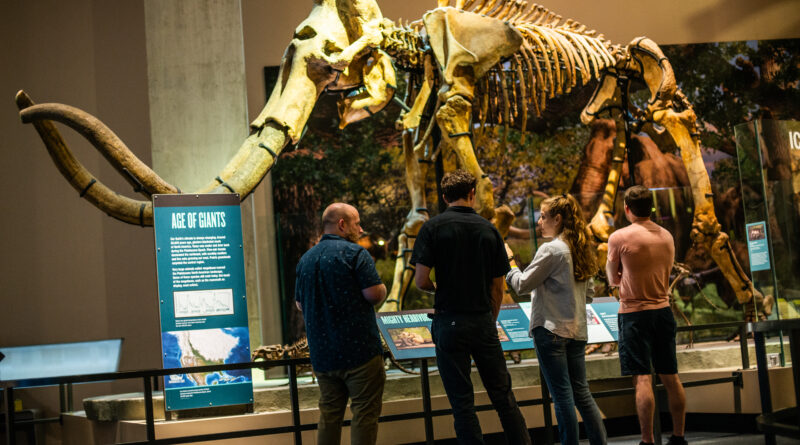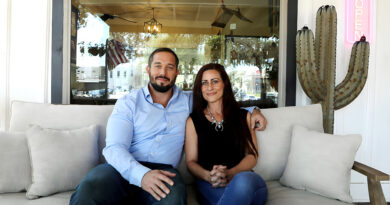Dallas-Fort Worth: Where big city life meets Texas charm
By TONYA WARREN and BRANDY CRUZ | Photos by BRANDY CRUZ and courtesy of the Perot Museum of Nature and Science,
visitdallas.com, The Dallas World Aquarium and visitfortworth.com
The Dallas-Fort Worth metroplex perfectly blends the vibrant city life with all the Texas charm you would come to expect from the Lone Star state.
Downtown Dallas has plenty of things to do for the entire family. The iconic skyline is full of unique architecture, including Fountain Plaza, a 60-story glass prism-shaped tower; the Nasher Sculpture Center, which features some of the most unique sculptures in the world; and Fair Park, featuring the world’s largest collection of Art Deco buildings.
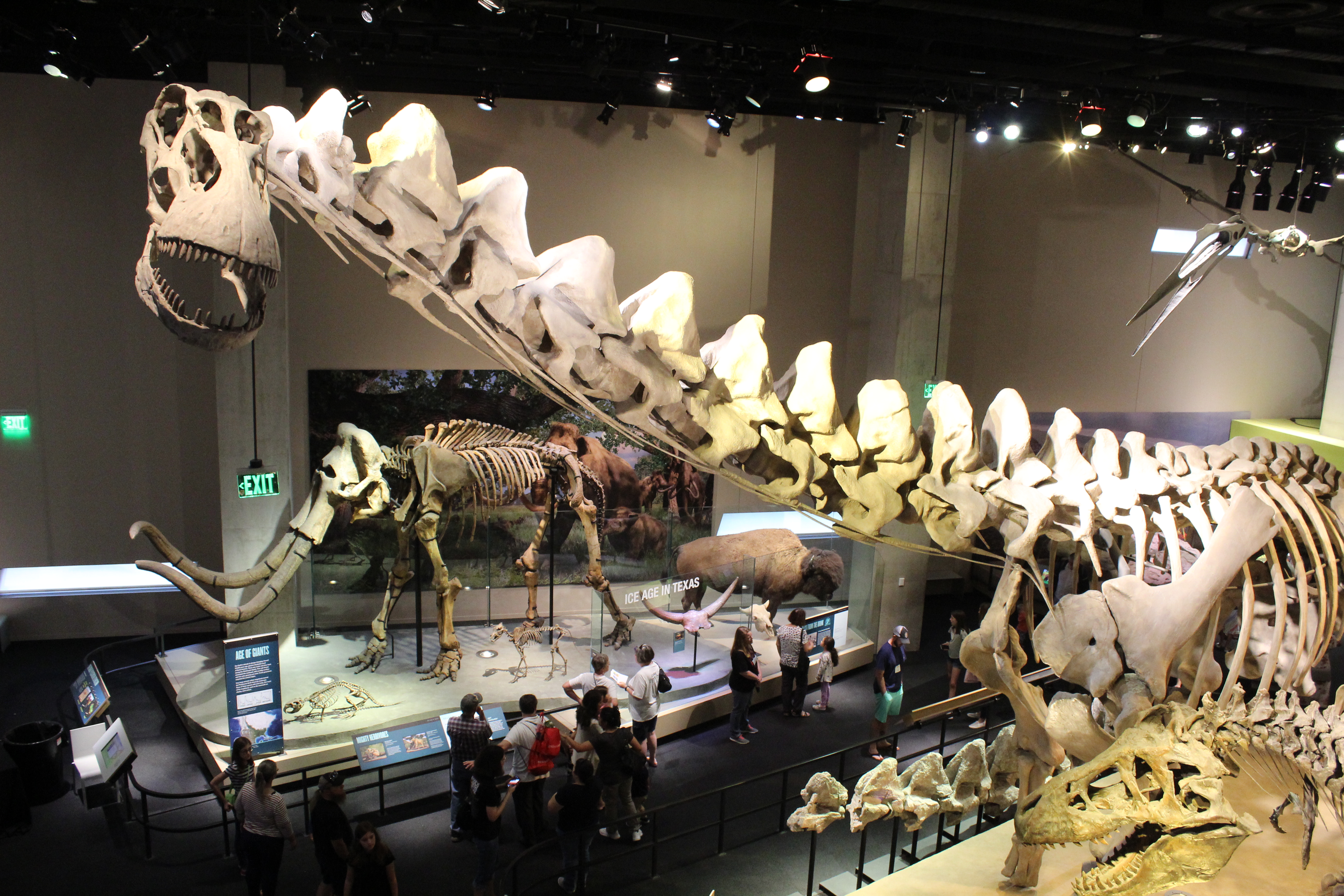 Perot Museum of Nature and Science
Perot Museum of Nature and Science
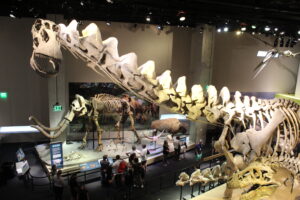 One building that always catches the eye in Dallas is the Perot Museum of Nature and Science. The unique architectural style of the building is intriguing, enticing people to check out the fascinating world inside. The museum was named in honor of H. Ross and Margot Perot, whose philanthropic work helped fund medical centers throughout the Dallas-Fort Worth area.
One building that always catches the eye in Dallas is the Perot Museum of Nature and Science. The unique architectural style of the building is intriguing, enticing people to check out the fascinating world inside. The museum was named in honor of H. Ross and Margot Perot, whose philanthropic work helped fund medical centers throughout the Dallas-Fort Worth area.
Included inside the 180,000-square-foot space are five stories of family fun. There are 11 permanent exhibit halls, six learning labs, a traveling gallery, cinema and an outdoor play space. The exhibits focus on space, energy, minerals, the human body, animals, engineering, sports and family.
One of the most popular areas is the T. Boone Pickens Life Then and Now Hall, which features towering dinosaur bones and fossils. The exhibit gives a glimpse into what life would have been like for dinosaurs, and how they relate to modern-day animals. Of course, everyone loves the giant tyrannosaurus rex, but the alamosaurus makes the T-Rex look like a baby in comparison.
The museum also features interesting temporary exhibits. Right now, the museum has a glow lab, an immersive experience which encourages visitors to build and play with its modular units.
The museum encourages play, with scavenger hunts throughout the exhibits that spark the imagination and curiosity. It’s easy to spend several hours or even an entire day at the museum and still look forward to your next visit.
Website: www.perotmuseum.org
The Dallas World Aquarium
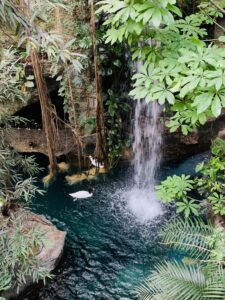 Located a couple of blocks from the Perot Museum is The Dallas World Aquarium. Don’t plan to visit both places in the same day, however, because one could easily spend an entire day at each location and probably not experience everything.
Located a couple of blocks from the Perot Museum is The Dallas World Aquarium. Don’t plan to visit both places in the same day, however, because one could easily spend an entire day at each location and probably not experience everything.
On one of those extra hot Texas days, plan a trip to the aquarium. The 87,000-square-foot facility includes a lush rainforest that feels like stepping into a jungle, complete with tropical plants, exotic animals and a three-story waterfall. The aquarium also boasts a 20,000-gallon tank with a 40-foot-long glass tunnel with sharks, stingrays and a multitude of other sea life swimming overhead.
One of the most popular animals at the aquarium seems to be the manatee. The gentle giant, also known as a sea cow, is an herbivorous mammal that enjoys warm bodies of water. Although a lot of people hover around the manatee tank, waiting for crowds to clear is even better for photos.
Website: www.dwazoo.com
Dealey Plaza
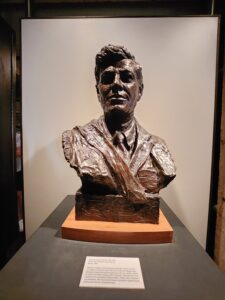 One of the most infamous sites in Texas is Dealey Plaza and the Sixth Floor Museum. At approximately 12:30 p.m. Nov. 22, 1963, President John F. Kennedy was assassinated while riding in a motorcade through downtown Dallas. Lee Harvey Oswald was accused of assassinating the president while shooting from the sixth floor of the Texas School Book Depository.
One of the most infamous sites in Texas is Dealey Plaza and the Sixth Floor Museum. At approximately 12:30 p.m. Nov. 22, 1963, President John F. Kennedy was assassinated while riding in a motorcade through downtown Dallas. Lee Harvey Oswald was accused of assassinating the president while shooting from the sixth floor of the Texas School Book Depository.
After traveling north on North Houston Street, the president’s motorcade made a left onto Elm Street. While passing the grassy knoll, where some people believe the shots came from, three shots rang out, leaving Americans devastated over the loss of a beloved president. Today, a large X marks the spot where the 1961 Lincoln Continental convertible limousine was located when the president was shot.
The School Book Depository was transformed into a museum in 1989, complete with historical images, documents and belongings regarding Kennedy. Hundreds of thousands of visitors flock to see for themselves what happened on that fateful day. While there are conspiracies and unanswered questions, the museum gives a glimpse into what experts believe happened 62 years ago.
Website: www.jfk.org
Fort Worth Stockyards
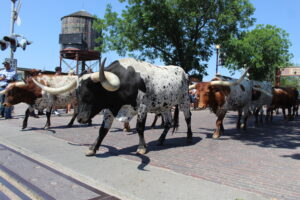 The Fort Worth Stockyards is a must-see while living in or visiting the Lone Star State. It’s a true Texas experience, complete with cowboys and cattle.
The Fort Worth Stockyards is a must-see while living in or visiting the Lone Star State. It’s a true Texas experience, complete with cowboys and cattle.
Located along East Exchange Avenue, the Fort Worth Stockyards is a shopper’s paradise, with everything one could imagine in the 98 acres of space. Many of the shops are former stockyards, where livestock were once housed in the late 1800s and early 1900s. The stockyards was the last stop along the historic Chisholm Trail to load into trains heading north.
Restaurants with a variety of food options can be found, along with live music, entertainment, plenty of souvenirs shops and other hidden gems.
The highlight of the experience is the cattle drive, which takes place twice daily at 11:30 a.m. and 4 p.m., except for Easter Sunday, Thanksgiving Day and Christmas Day. The cattle drive features a dozen or more Texas Longhorns and should not be missed.
You can also visit the Fort Worth Herd Experience from 1:30 to 2:30 p.m. on Fridays, Saturdays and Sundays. The visit gives a behind-the-scenes looks at the beautiful animals and interaction with the drovers, the people who manage and herd the animals. The Herd Experience is located behind the Livestock Exchange Building.
Website: www.fortworthstockyards.org
John Wayne — An American Experience
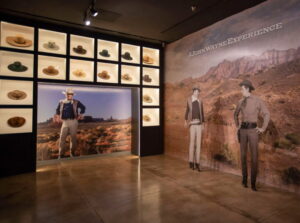 Conjuring images of the Wild West, cowboys and gun fights leads most people to think about John Wayne, the late actor who starred in a whopping 83 Western movies. Although the Duke was not a Texan by birth, the Lone Star State embraced him and now welcomes thousands of casual fans to the most die-hard John Wayne fans ever birthed this side of the Mississippi, to the John Wayne – An American Experience exhibit at the Fort Worth Stockyards.
Conjuring images of the Wild West, cowboys and gun fights leads most people to think about John Wayne, the late actor who starred in a whopping 83 Western movies. Although the Duke was not a Texan by birth, the Lone Star State embraced him and now welcomes thousands of casual fans to the most die-hard John Wayne fans ever birthed this side of the Mississippi, to the John Wayne – An American Experience exhibit at the Fort Worth Stockyards.
The 10,000-square-foot museum includes impressive floor to ceiling black and white photographs that show Wayne in some of his most iconic films. It is interesting to note some photos displayed have never been seen by the public. Another wall in the photo gallery displays various size pictures of Wayne with many of his Hollywood peer group. One memorable large photograph shows the Duke cutting into a large cake celebrating his 40th anniversary in the motion picture business. While cutting the cake, and flanked by actor friends such as Clint Eastwood, Fred McMurray, Jimmy Stewart and others, one can’t help but notice the palpable friendship and mutual respect these men have for each other as well as their profession. Videos with audio certainly bring this larger-than-life actor back to life, telling stories in a way that only Wayne could with his low gravel-like voice that still, to this day, commands attention.
While the photo gallery is impressive, the real fun continues in viewing Wayne’s personal and professional items, such as his 1976 forest green Pontiac Safari station wagon. The aroma wafting from the tires and leather seats is still slightly noticeable. Fans enjoy seeing how the rooftop was adjusted to accommodate the actor’s 6-foot-4 strapping height not including the extra height when he wore a Stetson. The displays also include Wayne’s container of sand from Iwo Jima, his Medal of Freedom award, which was awarded posthumously by former President Jimmy Carter and his Congressional Gold Medal, awarded to a civilian who has made a significant impact on the American culture and history, according to Wayne’s son, Ethan.
Movie wardrobes are displayed from some of Wayne’s more famous motion pictures such as his Marine uniform from Sands of Iwo Jima, his leather vest from Big Jake, and the black frock coat he donned in his last movie, The Shootist, and others. His True Grit eye patch is a favorite.
Firearm enthusiasts will appreciate the Remington 1861 New Model Army gun used in Wayne’s first film in 1930, The Big Trail and many other guns and movie props he used are on display. Learn about Wayne’s Arizona cattle ranch and marvel at his Best Actor Oscar for his 1969 outstanding performance as Rooster Cogburn in True Grit.
Whether on land or sea, in his movies, Wayne fought enemies, so it is fitting this Hollywood giant, as he lay on his deathbed succumbing to cancer, instructed his family to use his name to fight the disease. For almost half a century, the John Wayne Cancer Foundation has provided funds to train doctors. Today, 160 specialists have been trained in the fight against cancer and their names are listed on the exhibit wall with more names added each year. The cancer fight is a war worth winning, and any progress remains Wayne’s most enduring legacy.
Website: www.johnwayneae.com

